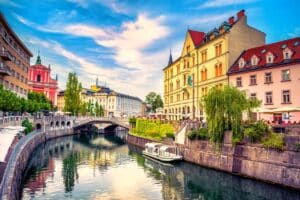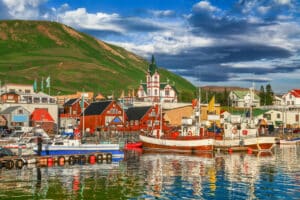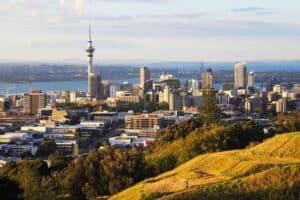Norway is a Scandinavian gem with around 5.4 million residents that’s consistently earned its spot among the best places to live and visit.
To be more specific, Norway is the world’s third most prosperous country, outshining heavyweights like Switzerland, Netherlands, Japan, Iceland, New Zealand, Germany, the United Kingdom, and the United States!
How lovely. But what’s your reason for visiting Norway?
Is it the breathtaking fjords, the blend of modernity and charm in its cities, or perhaps the peace of mind that comes from being in one of the safest countries on Earth?
Yes, that’s right. Norway isn’t just prosperous, but it’s also very safe. So, if your 2024 travel wish involves places where safety is given, choosing Norway is a smart move.
This article will delve into the details of safety in Norway. There are still considerations and aspects to be aware of, so stay tuned for the complete guide!
Are you planning a last minute trip to Norway? We’ve put together all the resources you’ll need for a fun & safe travel:
🛌 Best & Safest Places to Stay in Norway:
👉 Opus 16 – Fitness centre, Tea/coffee maker in all rooms, Restaurant
👉 Britannia Hotel – Spa and wellness centre, Family rooms, Private parking
👉 Thon Hotel Svolvær – Key card access, Private bathroom, Fitness centre
👉 Hotel Bristol – Key card access, Free WiFi, Facilities for disabled guests
⛱️ Fun Activities & Tours in Norway:
👉 Aurora Hunt Tour with Citizen Science from Tromso
👉 Oslo Highlights Bike Tour
👉 Husky Sledding Self-Drive Adventure in Tromso
🚗 Best & Safest Norway Transportation Services:
👉 Airport Pickup Service – Welcome Pickups
👉 Rent a Car – DiscoverCars
🙏 Stay Safe While Travelling:
👉 Safetywing (for medical insurance)
👉 VisitorsCoverage (for trip insurance)
Is Norway Safe?

As per the Global Peace Index of 2023, Norway proudly held the 24th spot as one of the most peaceful countries worldwide.
Your visit to Norway will likely confirm this, as you’ll encounter a population known for their happiness and kindness. According to the World Happiness Record of 2019, Norway was recognized as the 8th happiest country worldwide.
So, not only is it peaceful, but it’s also a place where joy seems to thrive. Here’s a sneak peek at all the safety insights:
- International travel advisories: Level One, practice normal precautions
- Crime rating: 32.49, very low
- Most common crimes: Thefts, burglaries, and robberies
- Public transportation safety: Generally safe, but keep an eye on your stuff and know your routes to not get lost
- Safety walking alone during the day: High safety
- Safety walking alone during the night: Moderate safety
- Road safety: The roads are well-maintained, but weather conditions like ice and snow may impact road safety
- Beach safety: Watch out for potential pickpockets, and take notice of the water’s temperature, depth, and current
- Common natural disasters: Landslides, floods, snow storms, rainstorms, avalanches, earthquakes
- Carbon monoxide poisoning: Hotels and rental units usually have carbon monoxide detectors installed, either double-check with the staff or carry your portable CO detector
- Police presence: A total of 15,172 police officers as of 2023
- Medical care quality: Ranked #12 in the 2022 World Index of Healthcare Innovation
Travel Advisory for Norway
The United States, United Kingdom, Canada, Australia, and New Zealand travel advisories all rank Norway under the “Level One” category, which is reserved for the safest countries.
The crime risk is low but not nonexistent. Travel advisories point to an increased risk of pickpocketing during tourist season (May to September). Be careful in crowded areas like train stations, airports, public transport facilities, Oslo’s railway, hotel lobbies, tourist hotspots, restaurants, etc.
The authorities also give a heads-up on potential terrorist threats in Norway:
“Individuals and groups adhering to various ideologies have conducted attacks in the past. Norwegian authorities occasionally make arrests of terrorism suspects and recommend heightened vigilance due to the ongoing risk.”
So—Norway gets a thumbs-up from international travel advisories. The authorities have confidence in the country’s safety, but as always, keep the basic precautions in mind.
A Comprehensive Look at Norway Crime Rating
The crime rating of Norway is very low, at 32.49.
Overall crime has taken a dip over the past decade, with a drop of about 90,000 cases—from 79 per 1,000 inhabitants in 2012 to 56 in 2022.
Take property crimes as an example. Despite being the most common crimes in Norway, their numbers have plunged from almost 180,000 in 2012 to less than 105,000 in 2022.
When it comes to homicides, they’re nearly non-existent, with only 26 recorded in 2022.
Violent crimes can happen, the biggest threat being terrorist attacks. Oslo faced a terrorist attack in June 2022 that targeted the LGBTQ+ community. Still, this is a rare occurrence in an otherwise tranquil country.
Norway is, by and large, a safe haven. Yet, a touch of caution doesn’t hurt.
| Safety Concerns | Crime Rate | Status |
| Overall Crime Level | 31.31 | Low |
| Increase in Crime (Past 3 Years) | 58.82 | Moderate |
| Home Break-Ins and Thefts | 27.37 | Low |
| Mugging and Robbery | 28.43 | Low |
| Car Theft | 22.05 | Low |
| Theft from Vehicles | 28.89 | Low |
| Personal Attacks | 30.84 | Low |
| Verbal Insults | 31.25 | Low |
| Racial, Ethnic, Gender, or Religious-Based Attacks | 26.55 | Low |
| Drug Use and Dealing | 49.52 | Moderate |
| Property Crimes (Vandalism and Theft) | 37.35 | Low |
| Violent Crimes (Assault and Armed Robbery) | 28.19 | Low |
| Corruption and Bribery | 25.27 | Low |
| Safety Walking Alone in Daylight | 76.29 | High |
| Safety Walking Alone at Nighttime | 59.77 | Moderate |
Police Presence in Norway
Norway boasts the highest number of officers in 2023, a total of 15,172!
However, when you wander through Norwegian cities, you won’t bump into cops as frequently as, say, in New York. They usually show up when heading to a crime scene, overseeing a protest, or guarding a high-profile embassy.
This doesn’t mean Norwegian streets are unsafe. Norway is so safe that police officers aren’t always armed. It might raise eyebrows, but it aligns with Norway’s impressively low homicide rate. Interestingly, Iceland’s police officers follow the same playbook.
Norwegian police officers are known for their approachable and friendly nature. They chat casually with locals and tourists, so if you need safety tips or are just curious about the area, feel free to approach them—they’re there to help. If police officers aren’t to be found, call them on 112.
Public Transportation Safety in Norway
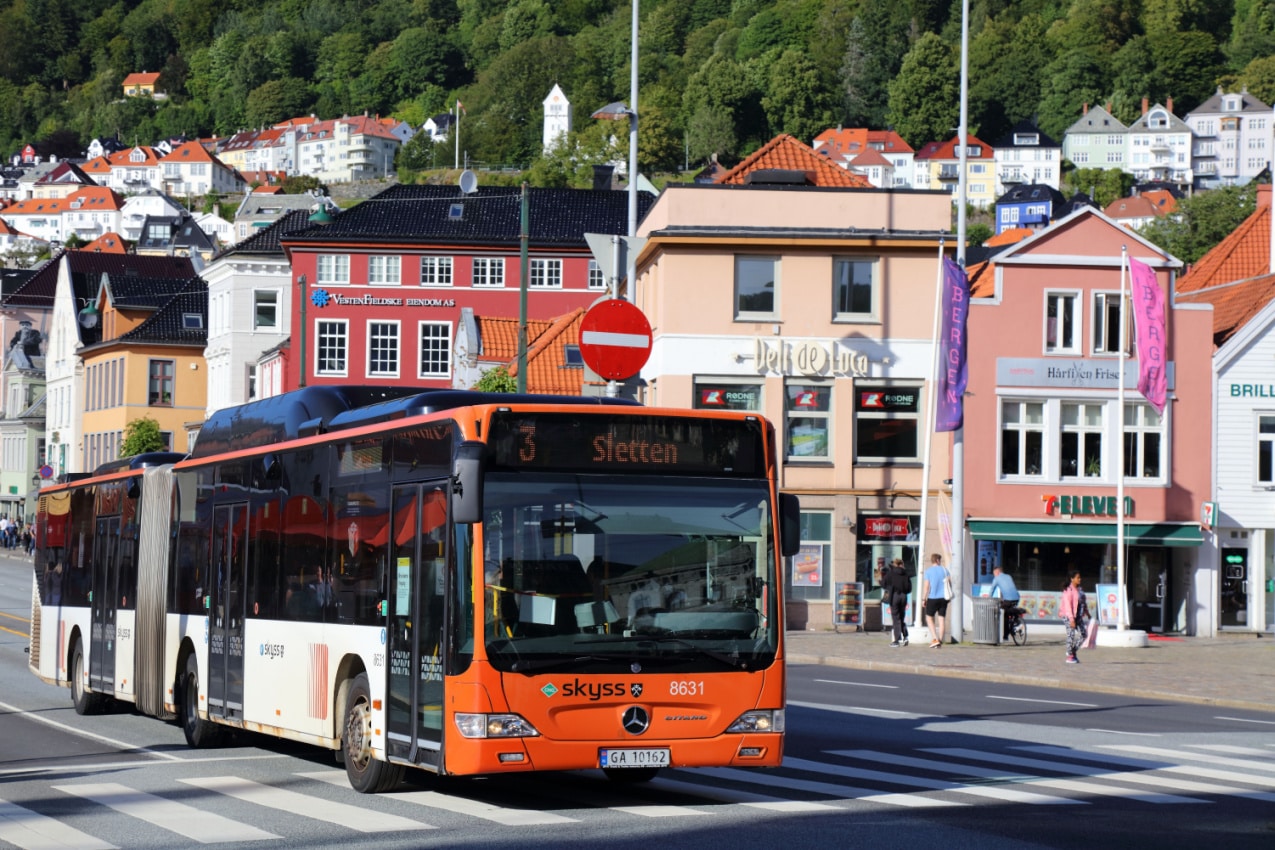
Norway’s transport network is a well-oiled machine—efficient, safe, and expansive. Just throw in the usual precautions you’d take anywhere else—keep an eye on your stuff, know your routes, and check the schedule so you’re not stuck waiting too long.
One thing to note is that Norwegian villages and towns are often spread out, sprawling over long distances. So, the transport network might not be as frequent as in the cities. On top of that, don’t be surprised if you find yourself walking a kilometer or two to the bus stop, ferry terminal, or train station to reach your destination. If you are on the outskirts and need a ride, especially at nighttime, it would be better to call a taxi!
Road Safety in Norway
Norway’s roads are true engineering wonders. The country boasts the longest tunnels globally. Potholes are so rare that people actually stop to take pictures of them.
Driving around Norway is very easy, but don’t expect a speedy road trip. The terrain and the lack of freeways, especially outside big cities, mean you’ll be sharing the road with trucks and other cars. Take it easy, soak in the stunning views, and roll at an average speed of 60 km/h (37 mph).
Weather plays a big role, especially in winter. Snow and ice might greet you on the roads, so be very cautious when driving under snowy conditions.
Medical Care Quality in Norway
Norway’s healthcare system is a global standout, ranking #12 in the 2022 World Index of Healthcare Innovation. Top marks go to Quality ( #7), thanks to Norway’s robust infrastructure and health outcomes.
Here’s a list of some top-notch hospitals in Norway:
- Oslo Universitetssykehus, Oslo
- Diakonhjemmet Oslo, Oslo
- St. Olavs Hospital, Trondheim
- Haukeland Universitetssykehus, Bergen
- Universitetssykehuset Nord-Norge, Tromsø
- Stavanger Universitetssjukehus, Stavanger
- Akershus Universitetssykehus, Lørenskog
- Sørlandet Sykehus Kristiansand, Kristiansand
- Bærum Sykehus, Bærum
- Drammen sykehus, Drammen
- Nordlandssykehuset Vesterålen, Stokmarknes
- Akershus Universitetssykehus, Kongsvinger
- Sykehuset i Vestfold, Tønsberg
- Sykehuset Telemark, Skien
- Sørlandet Sykehus Arendal, Arendal
Now, for peace of mind, consider travel insurance with medical coverage. It’s a financial safety net if you get hurt or sick during your trip. Some of the best travel insurances for Norway are Travelex, Faye, Nationwide, Seven Corners, HTH Travel Insurance, and Berkshire Hathaway Travel Protection.
With travel medical insurance, you get the care you need and bills are covered — otherwise, you have to pay for all the medical expenses, which may be super expensive!
Is It Safe to Travel Solo in Norway?
Norway is a great addition to your solo travel bucket list. Crime isn’t entirely absent, but incidents are relatively rare here. Street harassment is uncommon in this Scandinavian nation. Locals are generally friendly, and gender equality is highly respected.
Statistically, solo walks are highly safe in Norway during the day. However, for added precaution, avoid solo walks at night in unfamiliar areas. All in all, keep the standard awareness regarding your belongings and personal safety, and you’re good to go.
Perils of Nature: The Risk of Natural Disasters in Norway
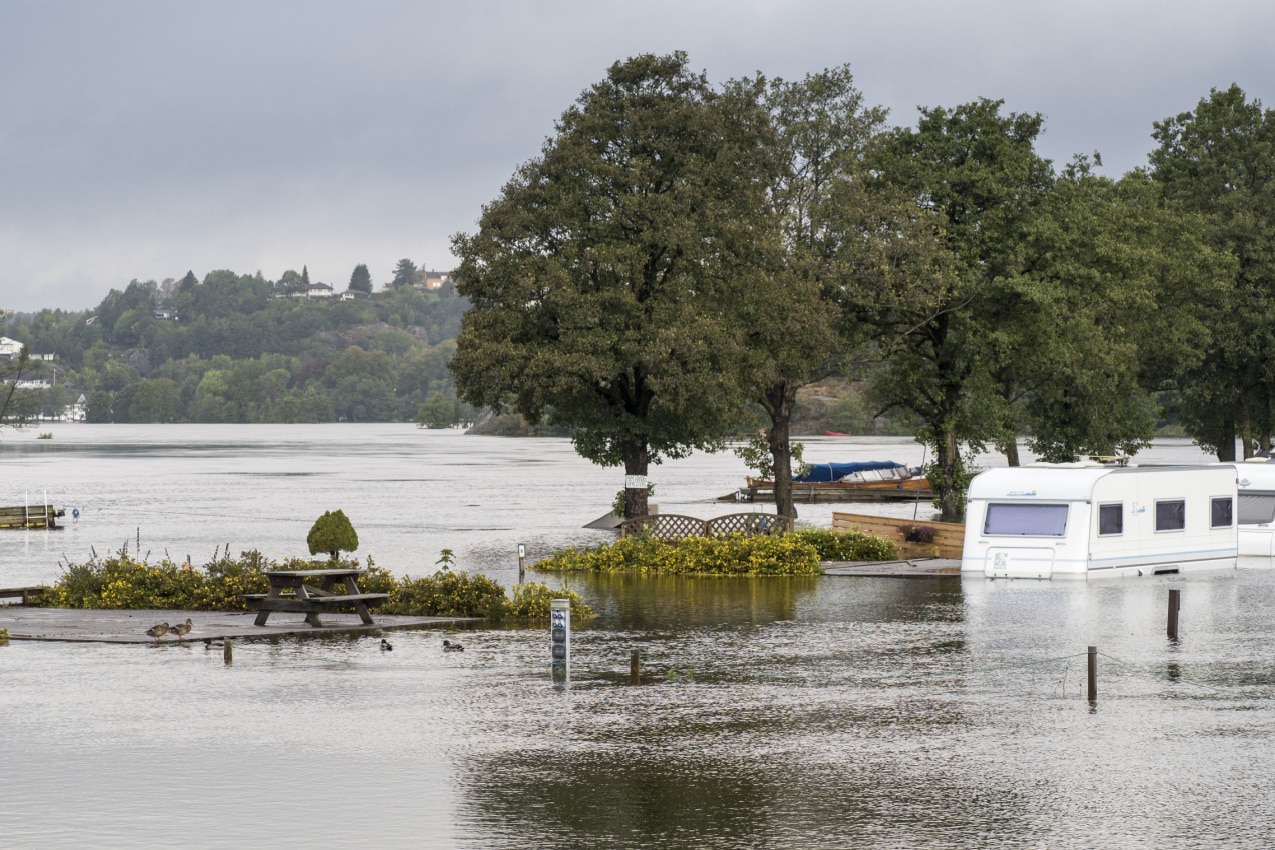
Don’t worry—Norway isn’t a natural disaster hotspot. The main natural risks here include landslides, floods, winter storms, avalanches, and earthquakes.
Landslides
Landslides are quite common on Norway’s rugged terrain, especially after heavy rains or rapid snowmelts.
The most significant landslide in recent memory occurred on June 3rd, 2020, in the Alta municipality—11,200 miles (18,024km) north of Oslo. This landslide, stretching over 2,000 feet (609 meters) along the shore and almost 500 feet inland, luckily resulted in no casualties. However, it did hurl 8 buildings into the sea.
Landslides usually hit where they’ve hit before. So, to play it safe in Norway, steer clear of places that have a landslide history. And what’s more important—don’t hike or drive in landslide-prone areas during or after a heavy downpour.
Floods
Floods in Norway usually happen after a series of heavy rainfall and melting snow.
One heavy flooding happened in August 2023 in southeastern Norway, where persistent heavy rainfall caused rivers to swell with substantial water volumes across the hilly landscape. Residents living near waterways had to relocate to safer spots, carrying their stuff from homes and parking their vehicles in elevated areas.
If a flood warning pops up, shift to higher ground. Your outdoor plans might need to wait until the situation improves. Avoid driving or walking through flooded areas and wait for the green light from authorities.
Snow Storms
Norway faces tough winters with lots of snow and powerful winds—so brace yourself for a frosty winter holiday.
The state meteorologists predicted a chilly start to 2024, especially in southern Norway. They’ve sounded the alarm for up to half a meter of snow, particularly along the southern coast—just when thousands of Norwegians are returning from Christmas and New Year’s holidays.
If you’re in Norway during a winter storm, you’ll get a heads-up from the weather forecasts. If heavy snowfall is on the horizon, your outdoor plans might need tweaking. Expect delays and disruptions, too. If things get worse, follow the authorities’ advice – hold off on driving or traveling until it’s safe. Grab a hot chocolate and soak in the snowy scene instead!
Rainstorms
At times, heavy rainfall in Norway can escalate into rainstorms with downpours, strong winds, and thunder.
In August 2023, Storm Hans wreaked havoc in Norway, bringing the heaviest rain in 25 years. The Randklev Bridge in Ringebu slid into the Lågen River. Road closures prompted tourists to stay indoors, while workers were advised to either take a day off or work from home.
Rain storms are monitored well in advance, so follow Norwegian weather forecasts before you book your trip. If a storm warning pops up, consider rescheduling your vacation. It’d be a downer for a storm to spoil your outdoor plans!
Avalanches
An avalanche happens when tons of snow barrel down a mountain at breakneck speed.
Norway faces a real threat with its towering mountains and heaps of winter snow. Come winter, and Norway gears up with avalanche warnings. In December 2023, Varsom, the Norwegian avalanche warning service, issued red-level warnings in southern and northern areas of Norway—a warning for the most destructive and life-threatening events.
Don’t brush off avalanches, especially if you’re into winter sports. If you’re in an avalanche-prone zone, stick to marked trails. Keep tabs on local avalanche risks, and if a warning is set up in your area, evacuate pronto.
Earthquakes
Norway isn’t sitting on a tectonic plate boundary, but it’s not immune to tremors, especially in the western regions.
The most powerful earthquake in Norway happened 11 years ago — a 6.10 magnitude quake. The latest quake happened on 13 December 2023 striking 749 miles (1,206 km) northwest of Norway’s center. This one registered 5.50 on the Richter Scale.
When the ground starts to shake Norway, remember to “Drop, Cover, and Hold On.” If you’re indoors, drop low, take cover under furniture, and hang tight until the shaking stops. Outdoors? Head to an open space, far from buildings and trees.
Beware the Silent Threat: Carbon Monoxide Poisoning in Norway
Back in 2020 in Oslo, twenty-five people got sick at a secret rave in an underground spot. The cause? A carbon monoxide (CO) leak from the generators they used. Luckily, they all survived.
Since that incident, Norway has been keeping gas-related sickness in check. Fast forward to 2023, and there haven’t been any reported cases. However, let’s talk about the nature of this silent threat.
Carbon monoxide is invisible, odorless, and tasteless, born out of the improper burning of fossil fuels like gas, diesel, and wood. Breathe it in, and it’ll make you feel nauseous and dizzy, or worse, knock you out. Stick around too long, and it could lead to serious problems like paralysis, brain damage, or, in extreme cases, loss of life.
Since this gas is invisible and our senses can’t detect it, you probably are thinking that there’s no solution to remain protected. But there is — a device called a carbon monoxide detector, installed in enclosed spaces, ready to sound the alarms whenever it senses dangerous carbon monoxide levels.
Many places worldwide, like hotels, rentals, and homes, usually have CO detectors installed. So, when you land in Norway, your hotel room will probably have one. But if you want ironclad safety from CO poisoning, have a chat with the hotel staff before you book a room. Or, for an added layer of security, consider carrying a portable carbon monoxide detector. It’s a small step for a lot of peace of mind!
Serenity by the Shore: The Safety of Norway Beaches
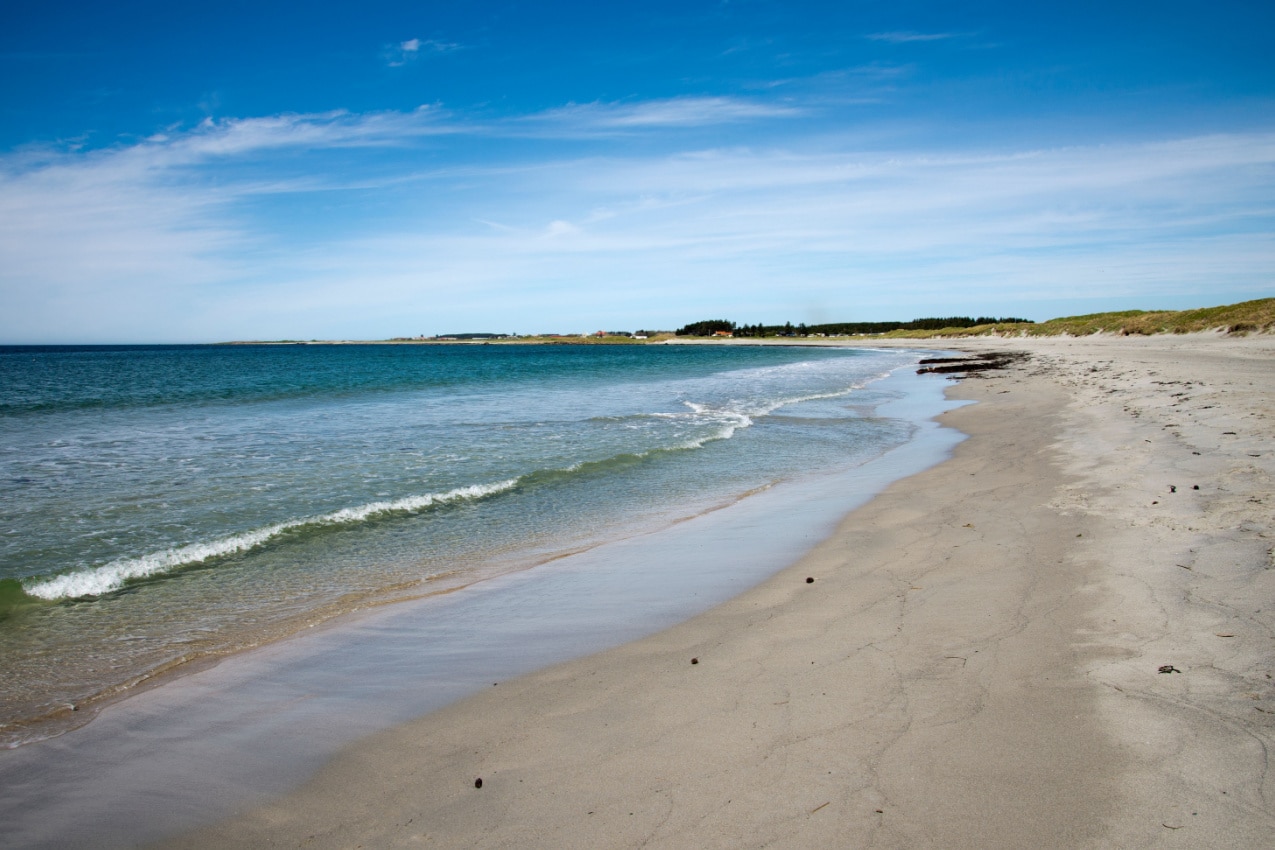
Swimming in Norway is generally safe, especially at popular beaches equipped with changing facilities, toilets, parking spots, and small stores offering ice cream and snacks.
However, it’s wise to take standard precautions, such as keeping an eye on your belongings. Some swimming areas may also lack lifeguards, so exercise sound judgment regarding the current, waves, and water temperature before venturing too far out.
If you’re considering a dip in a mountain lake during a hike, remember that the water is typically cold due to late snow melting in the high mountains. When swimming in fjords, note that they often lack shallow grounds and can descend rapidly. They’re not recommended for young children unless you’re at a known shallow beach. In larger rivers, watch out for strong currents, especially during late spring when snow melts into the streams and accelerates river flow. For ocean swims, be cautious of red jellyfish, as they can be painful to touch and are somewhat common in certain areas.
In summary, Norway welcomes you with fantastic options for a refreshing dip, so practice these safety precautions and you’re all set for a great experience!
Norway Weather Patterns: What to Expect
Norway experiences a diverse yet cool climate, influenced primarily by Atlantic Ocean currents and its mountainous terrain.
In the southern coastal areas, including cities like Oslo and Bergen, winters are mild with occasional snowfall, while summers are cool but still enjoyable. Rain is also very frequent here.
The inland regions have a colder and drier climate. Winters are long and frigid, with temperatures often dropping well below freezing. The summers are brief and mild.
The mountainous regions, such as the Scandes, have a subarctic climate characterized by long, snowy winters and short, cool summers. At higher altitudes, even the summer months can be quite chilly, ideal for skiing and snowboarding.
Whichever part of Norway you plan to visit, be sure to pack clothes for rainy days and changing weather. With the right gear, you can welcome the sun and navigate through the rain and snow without dampening your plans!
The Weather in Oslo
Oslo experiences short, comfortable, and partly cloudy summers and long, freezing, and mostly cloudy winters.
The warm season spans from the end of May to September, with average daily highs exceeding 62°F (16.6°C). July is the hottest month, with an average high of 70°F (21.1°C).
The cold season spans from mid-November to early March, with average daily highs below 37°F (2.7°C). January is the coldest month, with an average low of 20°F (-6°C).
The period with the least cloud cover is from the end of April to the end of September. July is the clearest month, with a clear sky about 52% of the time. In contrast, November is the cloudiest, with overcast skies approximately 70% of the time.
The wet season begins at the end of May and lasts until the end of January. The wettest month is August, averaging 10.7 wet days and 3.4 inches (86.36 mm) of rainfall.
The dry season spans the remaining months, with March being the driest month, averaging 7.4 wet days and 0.9 inches (22.86 mm) of rainfall.
Snowfall is the most common in January and February, more so in January, averaging 3.4 days with 8.8 inches (223.52 mm) of snowfall.
The average hourly wind speed in Oslo remains relatively constant throughout the year, around 4.5 mph (7.2 k/h). August boasts the warmest water temperature, averaging 61°F (16.1°C), while February sees the coldest water, averaging 37°F (2.7°C).
Monthly Average Temperatures in Oslo
| Month | Fahrenheit (°F) | Celsius (°C) |
| January | 25 | -3.8 |
| February | 25 | -3.8 |
| March | 32 | 0 |
| April | 41 | 5 |
| May | 52 | 11.1 |
| June | 59 | 15 |
| July | 63 | 17.2 |
| August | 60 | 15.5 |
| September | 52 | 11.1 |
| October | 43 | 6.1 |
| November | 34 | 1.1 |
| December | 27 | -2.7 |
When Is the Best Time to Visit Norway?
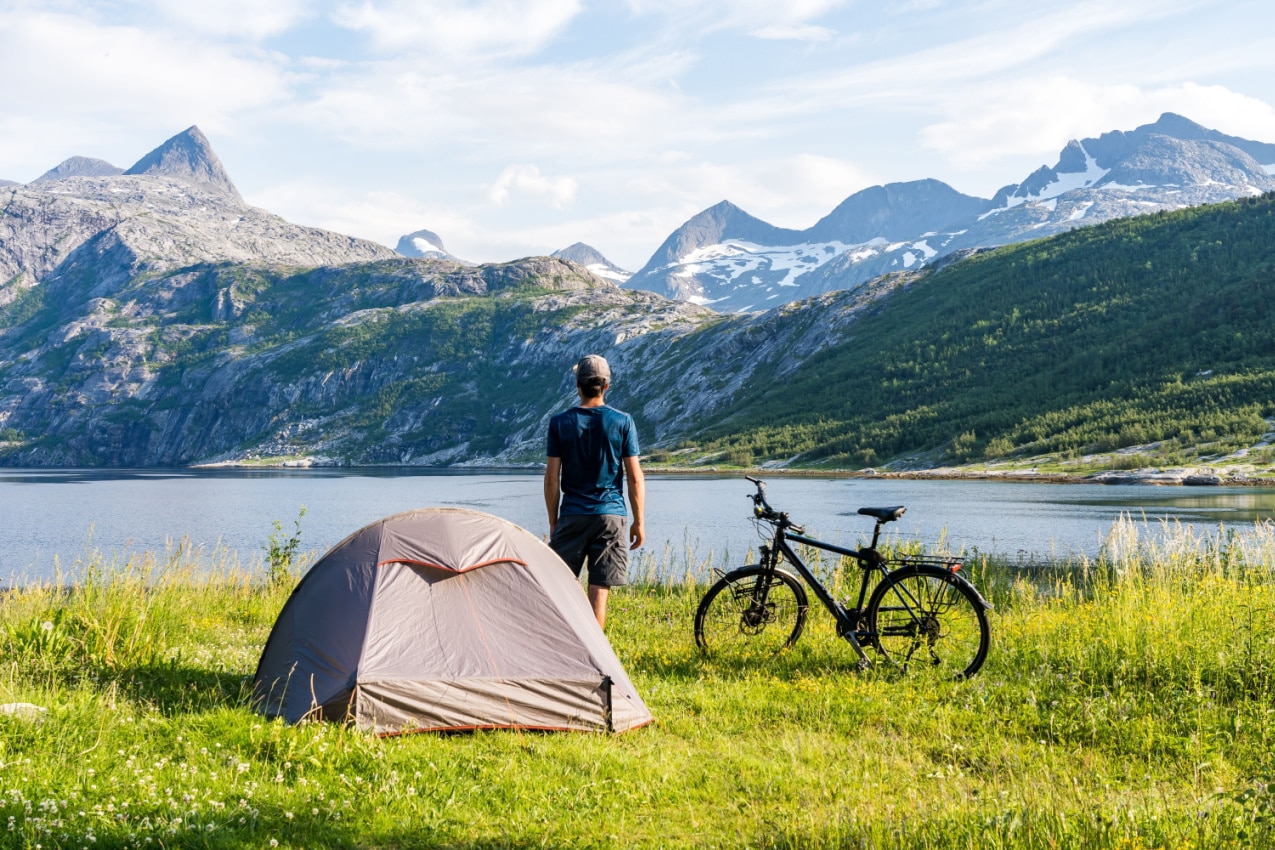
Summer is undeniably the best time to visit Norway, offering the finest weather, extended daylight hours, and a lively atmosphere with everything open and ready for exploration. The high season in Norway during summer also comes with a notable advantage: more affordable accommodation prices.
Winter is just a little behind summer as the ideal time to visit Norway. This season brings out the incredible spectacle of the northern lights — complemented by the beautiful Christmas atmosphere all over the country — and your winter holiday may be similar to the one you see in postcards!
Spring and fall are peaceful in Norway. That is part of the allure of traveling during these times. If you arrive in late spring (May, for example) or early fall (September), you can enjoy certain summer perks, such as cheaper hotels and open hiking trails, without the crowds that typically accompany the warmer months.
How to Stay Safe in Norway
- For summer hikes, take a look at the Norwegian Trekking Association’s list of essential summer hiking gear
- If you’re venturing out in winter, head to the Norwegian Trekking Association’s list of essential winter equipment
- For taxi services, consider the top three companies in Norway: Oslo Taxibuss, Danielsen Taxidrift Raufoss, and Uber
- Check avalanche warnings with the Norwegian Avalanche Warning Service
- Use Windy, a weather app for wind conditions and wave heights
- Entur.no will help you get around Norway easily, as it offers schedules, routes, and ticket options for all public transport — buses, trains, trams, ferries, and more
- The Vegvesen app provides real-time information on road conditions and keeps you safe when driving
- The Hjelp 113 app on Android and Apple connects you directly to emergency services
- When hiking in snowy mountains, carry a map and compass
- Hike with a professional — the International Federation of Mountain Guides Association (IFMGA) offers over 100 qualified mountain guides
- Always keep your tank full, as gas stations can be few and far between in mountainous or rural areas
- Plan your activities beforehand — GetYourGuide offers a wide range of activities, guided tours, and museum visits around Norway
Emergency Numbers
- Fire: 110
- Police: 112
- Ambulance: 113
- Emergency at sea: 120
- Poisons Information Center: 22 59 13 00
- Joint Rescue Coordination Center (JRCC) for mountain search and rescue: 51 51 70 00 (for JRCC in southern Norway) and 75 55 90 00 (for JRCC in northern Norway)
Ready for the Land of the Midnight Sun?
Norway might seem like a slice of heaven, but it shares some of the same challenges as any other place on Earth!
So, as you venture into Norwegian cities, keep an eye out for common petty crimes like pickpocketing and bag snatching.
When you step into nature, remember that the weather can throw curveballs, from rainstorms to snowstorms and floods. Choose your path wisely, as landslides and avalanches hit with little warning.
All in all, crime doesn’t have to be your primary concern in Norway since, as we’ve seen in the stats, the risk is low. But Mother Nature calls for great caution and preparedness.
Wishing you safe and memorable travels!

